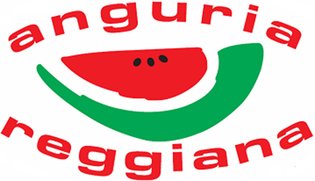PGI sought for Anguria Reggiana watermelon
The characteristic that makes Italy’s Anguria Reggiana watermelon stand out is the particularly sweet flavour of the pulp, linked to its sugar content.
The application for a Protected Geographical Indication (PGI) for the watermelon, published by the European Commission earlier this month, says this is thanks to a Brix value of more than 11 in the case of the Ashai Mijako type, and 12 in the case of the Crimson and Sentinel types.
The sweetness of these melons harks from the skill of the producers and the refined cultivation techniques they use, particularly at the time of harvesting or ‘picking’, it says.
“This is done in at least three visits to each plant, to ensure that every ‘Anguria Reggiana’ has fully ripened to the highest possible sugar content without being overripe, with crisp, firm flesh. The level of ripeness is shown by the visible characteristics of the rind, the footstalk and the tendril, and especially by the distinctive sound made when the watermelon is tapped with the hand. All of these external aspects can be evaluated in the field.
“Every watermelon is thus individually assessed, tapped and selected prior to harvest, and is picked only if the operator considers…it has attained the desired level of ripeness, consistency and keeping quality. The field inspection is generally carried out first thing in the morning when the watermelons have benefited from the cool of the night and are at a good storage temperature.
“The melons are picked with a billhook, a special cutting tool with a partially curved blade. This special tool has been perfected over the years so as to avoid severing the branches of the plant, which must remain in optimum physical condition until all the fruits have been picked. These operations rely on the ancient, accumulated know-how, handed down over generations, of the local pickers who can select the ripe fruit and harvest it whilst protecting subsequent production.
“The skills and knowledge of local producers arise from a long-standing tradition, which has led to a well-known association between the product and the region.”
Historical documents contain a wealth of references to watermelon cultivation in the Reggio Emilia area being a well-established, generations-old tradition.
The first mentions of its high quality date back to the 16th century; correspondence between the old courts of the Po Renaissance extol the excellence of the product cultivated in this area, the application says.
Geographical area
The production area includes the whole of the following municipalities: Bagnolo in Piano, Cadelbosco di Sopra, Campagnola, Castelnovo Sotto, Correggio, Fabbrico, Novellara, Poviglio, Rio Saliceto, S. Martino in Rio and parts of the following municipalities: Boretto, Brescello, Campegine, Gattatico, Gualtieri, Guastalla, Reggio Emilia, Reggiolo, Rolo and Rubiera.
Anguria Reggiana melon types
‘Anguria Reggiana’ is produced in the following types:
— round type, with the characteristics of the Ashai Mijako type: round fruit; grey-green rind with dark green stripes; firm, crisp flesh, which is bright red when fully ripe; weight varying between 5 kg and 12 kg,
— oval type, with the characteristics of the Crimson type: round, oval fruit; moderately bright green rind with dark green streaks; firm, crisp flesh, which is red when fully ripe; weight varying between 7 kg and 16 kg,
— elongated type, with the characteristics of the Sentinel type: elongated fruit; moderately bright green rind with dark green streaks; firm, crisp flesh, which is bright red when fully ripe; weight varying between 7 kg and 20 kg.



